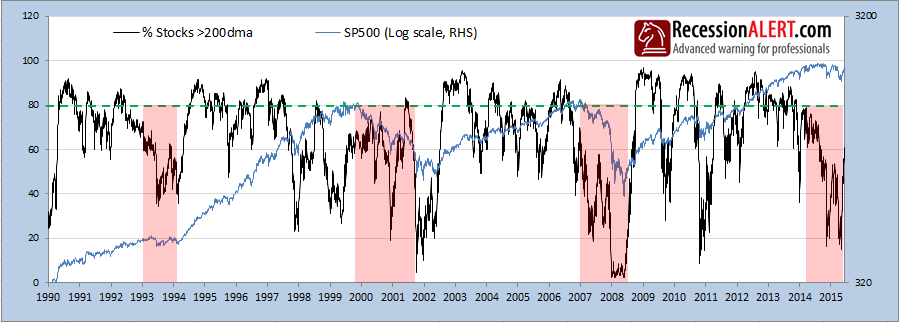Our first bear market signal was issued on 1 September 2015 when the Composite Market Health Index (CMHI) dipped below zero. Since then we had a sustained deterioration of the CMHI components to reinforce the signal, coupled with high stock market volatility.
Although market breadth features prominently in the CMHI, there is another way to identify the onset of bear markets for stocks by observing the behavior of the percentage of SP500 stocks trading above their 200-day moving average. In general, a bull market is healthy when this metric can regularly make prints above the 80% mark. However, when the SP500 is making new highs, and this breadth metric cannot achieve 80% or more, you have your bear market warning. This is shown for the last 3 notable bear markets below:
The warning provided by this model was issued around November 2014 already, and since then the SP500 has lost around 1%
The SP500 is attempting a new localized high, but it looks doubtful if it can take out the highs printed on 2 Nov 2015. Furthermore, the percentage of shares trading above their 200-day moving average remains lackluster (although it is at least higher than the reading on the 2 Nov 2015 high.)
Until this breadth metric manages to punch above 80% we need to acknowledge that the risk of us being in the midst of a protracted bear market in stocks remain very elevated, regardless of what the US economic data is telling us.
The characteristic we are witnessing is called deteriorating breadth, or breadth divergence or severe selectivity. It means the stock market is being propped up by fewer and fewer stocks and eventually this small subset of pursued stocks reaches nose-bleed valuations, leaving nowhere else to hide. When a significant portion of the investing populace can no longer find justifiable value among a small pool of stocks, the proverbial music stops and a rush to the exits commences.


Comments are closed.